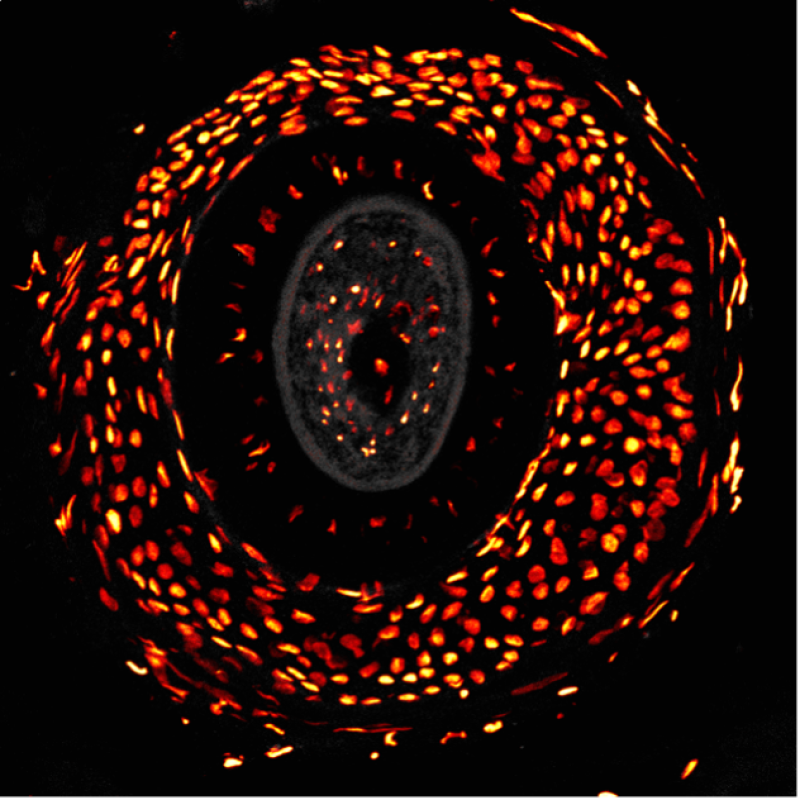21 September 2022
Alfonso Schmidt is a Bioimaging Specialist in the Hugh Green Cytometry Centre at the Malaghan Institute. He is a master of bioimaging technology platforms and guides researchers through the complex process of honing in on cells and molecules to understand what is going on.
Humans are visual creatures. We rely on visual cues for many things in life and scientific research is no different. From seeing the relationship between two factors on a graph to peering into a microscope to the world of the miniscule, visual data is vital to the scientific process.
When a researcher sets out to answer a question, they must consider which tools can accurately give them insight into the phenomena they are investigating. This means one of the most important parts of designing an experiment is deciding which techniques to use, how to use the tools correctly and how to accurately interpret what the resulting data represents.
Alfonso helps researchers decide which bioimaging tools are most suitable for the investigations they want to carry out and teaches them how to fine-tune these instruments.
"It’s like seeing worlds, within worlds. The ability to reveal the mystery of a cell or organism by literally observing it is incredible."
“Considerable advancements in the field over the last few years have meant that bioimaging has gone from something that was historically limited to qualitative data to a research field that is increasingly used to give reliable quantitative data,” says Alfonso.
Quantitative data is the crux on which researchers rely to support their findings, so bioimaging is becoming a progressively more valuable and versatile tool in answering scientific questions.
“We can now record three dimensional images and observe the effects of administering a therapeutic vaccine on tumour growth,” says Alfonso. “We can then quantify any changes in tumour size and determine the effectiveness of the vaccine on targeting the tumours.”
Alfonso describes the process like something akin to magic. Like looking into space and being able to see alien worlds unfolding before our eyes, except that most of these processes are happening inside us, in our cells.
“The scale with which we can see the images is so broad, ranging from the molecular level to the whole organism. It’s like seeing worlds, within worlds. The ability to reveal the mystery of a cell or organism by literally observing it, is incredible,” says Alfonso.
Alfonso has had a keen interest in photography from a young age.
“I was really captivated by working with elements like light and time as an expression of art. For me, bioimaging is essentially micro-photography where I must consider these same principles of light and time to capture an image that is both accurate and easy to interpret,” says Alfonso.
In fact, in 2020, one of his images won the CoolLED image competition for the most visually impressive microscopy image.
Alfonso captured the cross section of a hair follicle in which he dyed the nuclei fluorescent orange in an image that looks remarkably akin to the Eye of Sauron, which is what he called his winning submission.
Originally from Chile, Alfonso lived in Valdivia in the south where he worked as a marine biologist in a very niche area of research.
“I went into marine biology because it was just so mysterious for me, especially as a young man. What could be more interesting than the big, boundless ocean? Everything from microalgae to marine mammals. A whole other world most people are oblivious to,” says Alfonso. “And a career where your job is just to keep on learning? Yes please! I enjoyed learning then and I continue to enjoy learning now.”
At the time, he was collecting and analysing samples of aquatic snails from Chiloé Island in the south of Chile. He was looking to understand the relationship between their reproductive strategy and their habitat.
Twelve years ago, Alfonso moved to New Zealand with his wife and new-born daughter so his wife could pursue her PhD here. He got a job at the Malaghan Institute as an Animal Technician soon after. He then gradually followed his research interests to become a technology specialist at the institute.

“One of the most satisfying things about working at the Malaghan is that I don’t have to ask myself what impact I am making on the world. The values and goals of the institute are clear. We’re all striving to understand and develop better treatments for diseases like cancer and allergies,” says Alfonso. “For me this means I have a clear purpose to go to work every day.”
